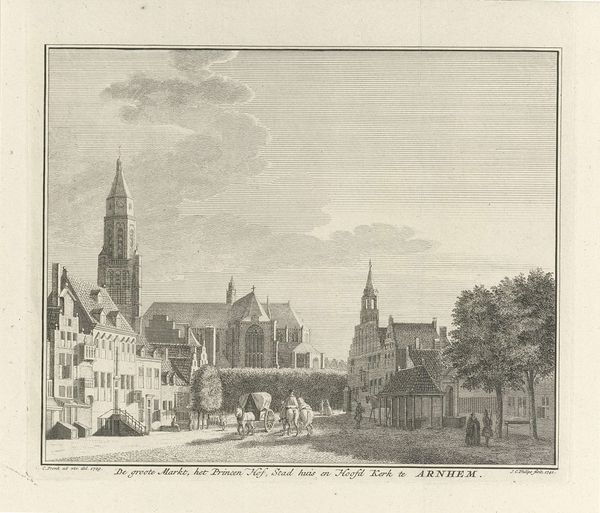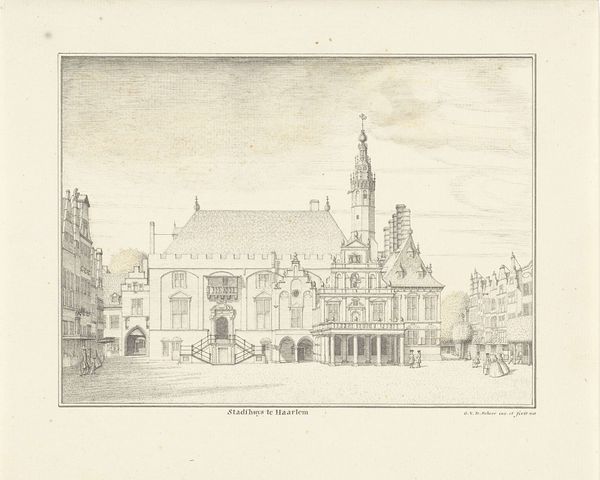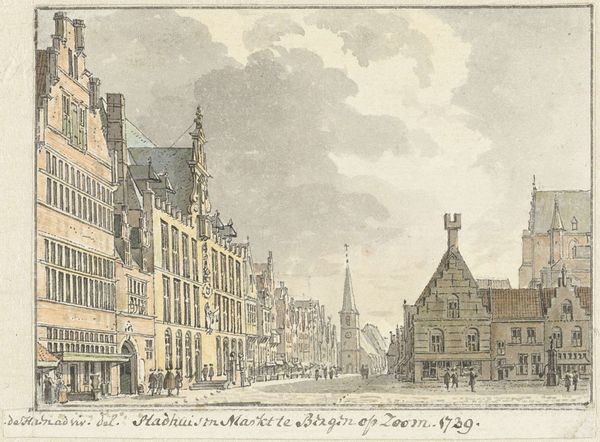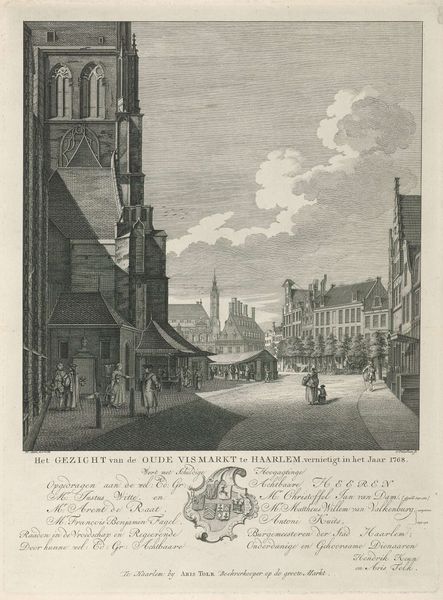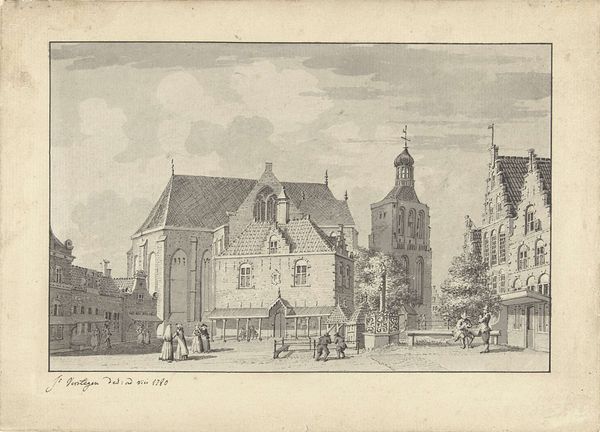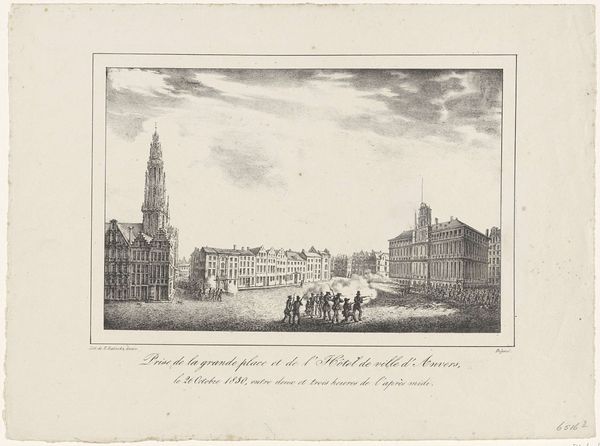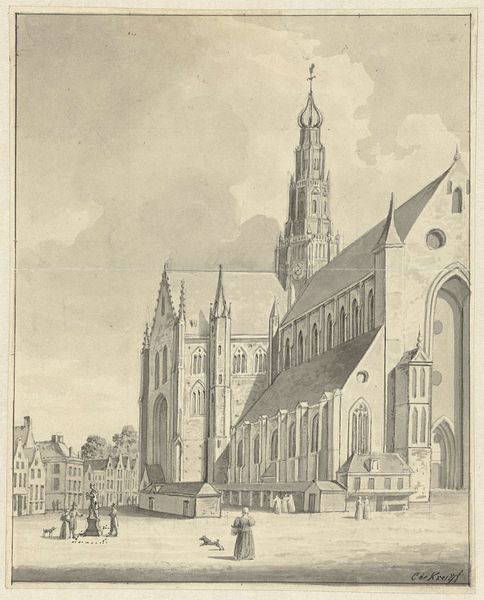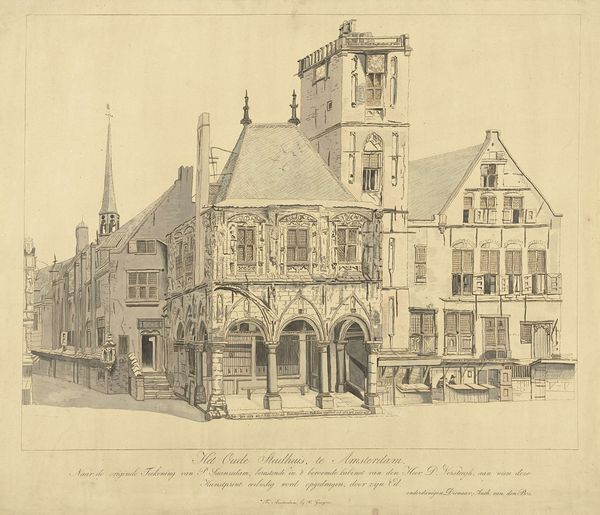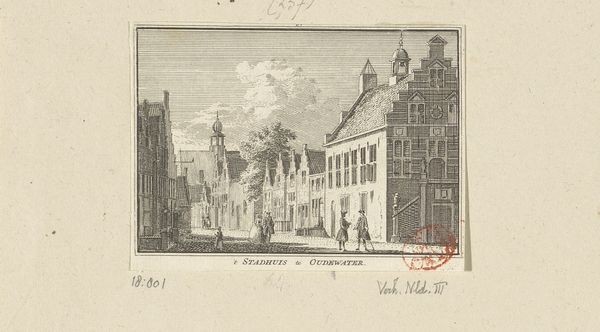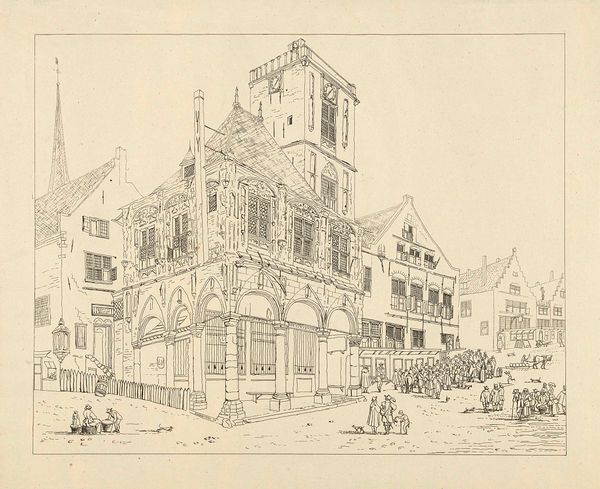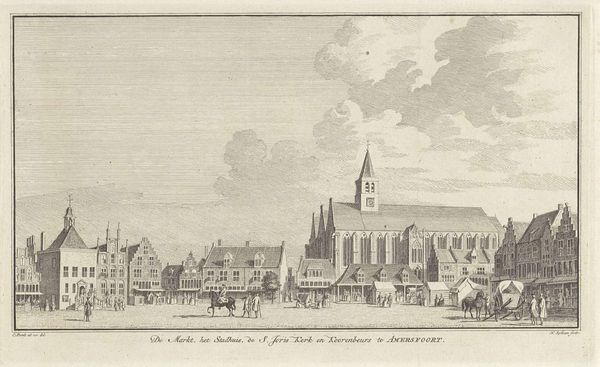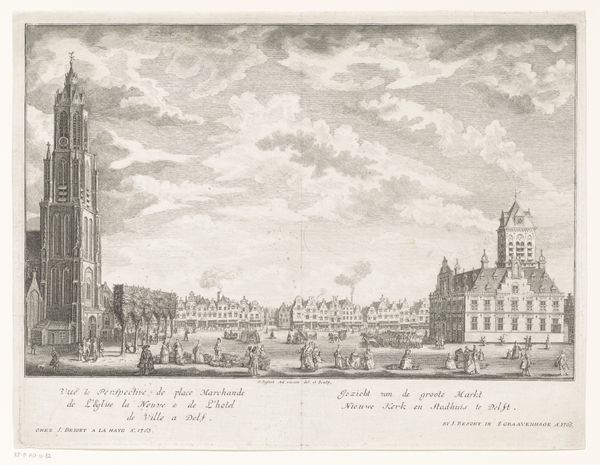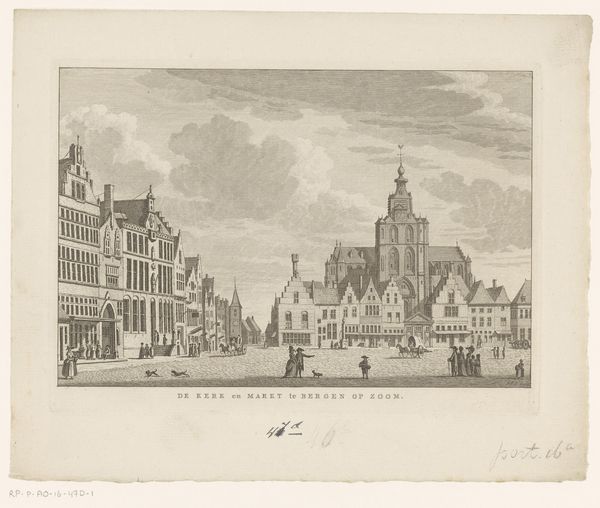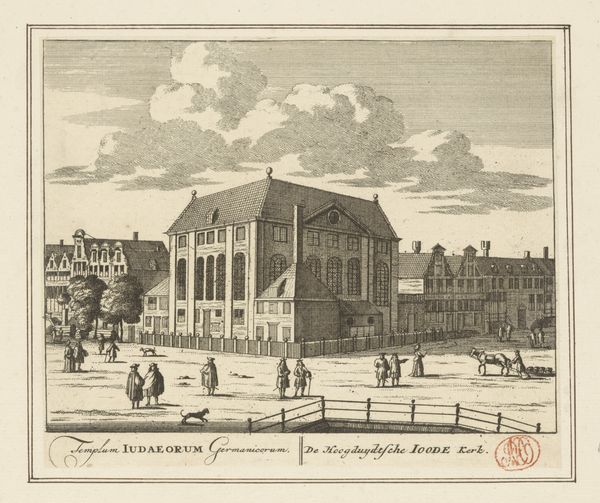
drawing, paper, pen, architecture
#
architectural sketch
#
drawing
#
baroque
#
dutch-golden-age
#
landscape
#
paper
#
geometric
#
pen
#
cityscape
#
genre-painting
#
architecture
#
realism
Dimensions: height 130 mm, width 200 mm
Copyright: Rijks Museum: Open Domain
Editor: This is "De markt te Zwolle" or "The Market in Zwolle," a pen drawing on paper by Cornelis Pronk, created in 1732. It has such a beautifully ordered composition, yet something about the stark lines makes it feel… almost empty. What do you see when you look at this piece? Curator: The clarity of line and precise delineation of form are certainly compelling. Notice how the artist uses varied densities of hatching to describe the surfaces and volumes. The geometric precision employed in rendering the architectural elements provides a compelling structure. Have you considered how the perspective lines contribute to a sense of depth? Editor: Yes, it’s like the lines create a stage, drawing me into the scene. The starkness is tempered by the sheer volume of visual information – all those windows! Does the precision relate to the period? Curator: Indeed. The Baroque period embraced clarity and order. However, note how Pronk departs from strict realism. The linear quality of the work flattens the space somewhat, creating an interesting tension between representation and artifice. Are you struck by the geometric regularity evident throughout the drawing? Editor: Now that you point it out, it’s everywhere! It definitely adds to that sense of calculated calm. It makes me wonder if the artist cared about documenting reality as it was, or presenting a heightened ideal. Curator: An astute observation. Perhaps it is both. The drawing functions as a record, but the compositional choices elevate it beyond mere documentation. We see Pronk exploring the inherent visual language of geometry, line, and form, using the cityscape as a vehicle for that exploration. Editor: That really shifts my perspective on the piece. I had been looking at it in terms of subject, and not as an exercise in pure form. Curator: Precisely. Shifting our gaze from what is depicted to how it is depicted unlocks further appreciation of the work.
Comments
No comments
Be the first to comment and join the conversation on the ultimate creative platform.
